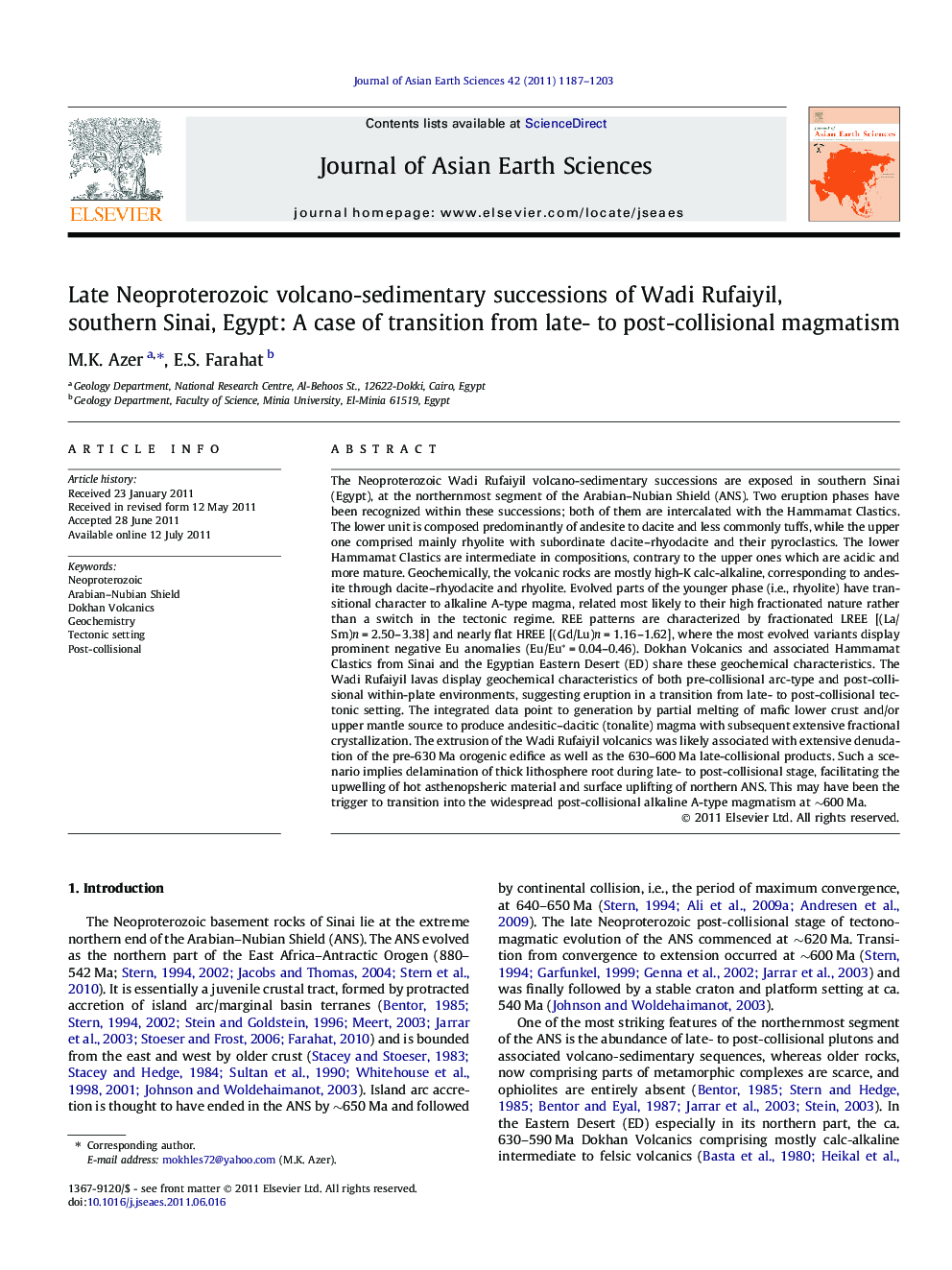| کد مقاله | کد نشریه | سال انتشار | مقاله انگلیسی | نسخه تمام متن |
|---|---|---|---|---|
| 4731686 | 1356817 | 2011 | 17 صفحه PDF | دانلود رایگان |

The Neoproterozoic Wadi Rufaiyil volcano-sedimentary successions are exposed in southern Sinai (Egypt), at the northernmost segment of the Arabian–Nubian Shield (ANS). Two eruption phases have been recognized within these successions; both of them are intercalated with the Hammamat Clastics. The lower unit is composed predominantly of andesite to dacite and less commonly tuffs, while the upper one comprised mainly rhyolite with subordinate dacite–rhyodacite and their pyroclastics. The lower Hammamat Clastics are intermediate in compositions, contrary to the upper ones which are acidic and more mature. Geochemically, the volcanic rocks are mostly high-K calc-alkaline, corresponding to andesite through dacite–rhyodacite and rhyolite. Evolved parts of the younger phase (i.e., rhyolite) have transitional character to alkaline A-type magma, related most likely to their high fractionated nature rather than a switch in the tectonic regime. REE patterns are characterized by fractionated LREE [(La/Sm)n = 2.50–3.38] and nearly flat HREE [(Gd/Lu)n = 1.16–1.62], where the most evolved variants display prominent negative Eu anomalies (Eu/Eu* = 0.04–0.46). Dokhan Volcanics and associated Hammamat Clastics from Sinai and the Egyptian Eastern Desert (ED) share these geochemical characteristics. The Wadi Rufaiyil lavas display geochemical characteristics of both pre-collisional arc-type and post-collisional within-plate environments, suggesting eruption in a transition from late- to post-collisional tectonic setting. The integrated data point to generation by partial melting of mafic lower crust and/or upper mantle source to produce andesitic–dacitic (tonalite) magma with subsequent extensive fractional crystallization. The extrusion of the Wadi Rufaiyil volcanics was likely associated with extensive denudation of the pre-630 Ma orogenic edifice as well as the 630–600 Ma late-collisional products. Such a scenario implies delamination of thick lithosphere root during late- to post-collisional stage, facilitating the upwelling of hot asthenopsheric material and surface uplifting of northern ANS. This may have been the trigger to transition into the widespread post-collisional alkaline A-type magmatism at ∼600 Ma.
► The late Neoproterozoic Wadi Rufaiyil volcano-sedimentary successions are exposed in southern Sinai.
► Two eruption phases have been recognized, both of them are intercalated with the Hammamat Clastics.
► They are equated with late- to post-collisional Dokhan Volcanics.
► Generation via partial melting of mafic source followed by fractional crystallization is advocated.
► Partial melting is linked to lithospheric delamination process.
Journal: Journal of Asian Earth Sciences - Volume 42, Issue 6, 11 November 2011, Pages 1187–1203